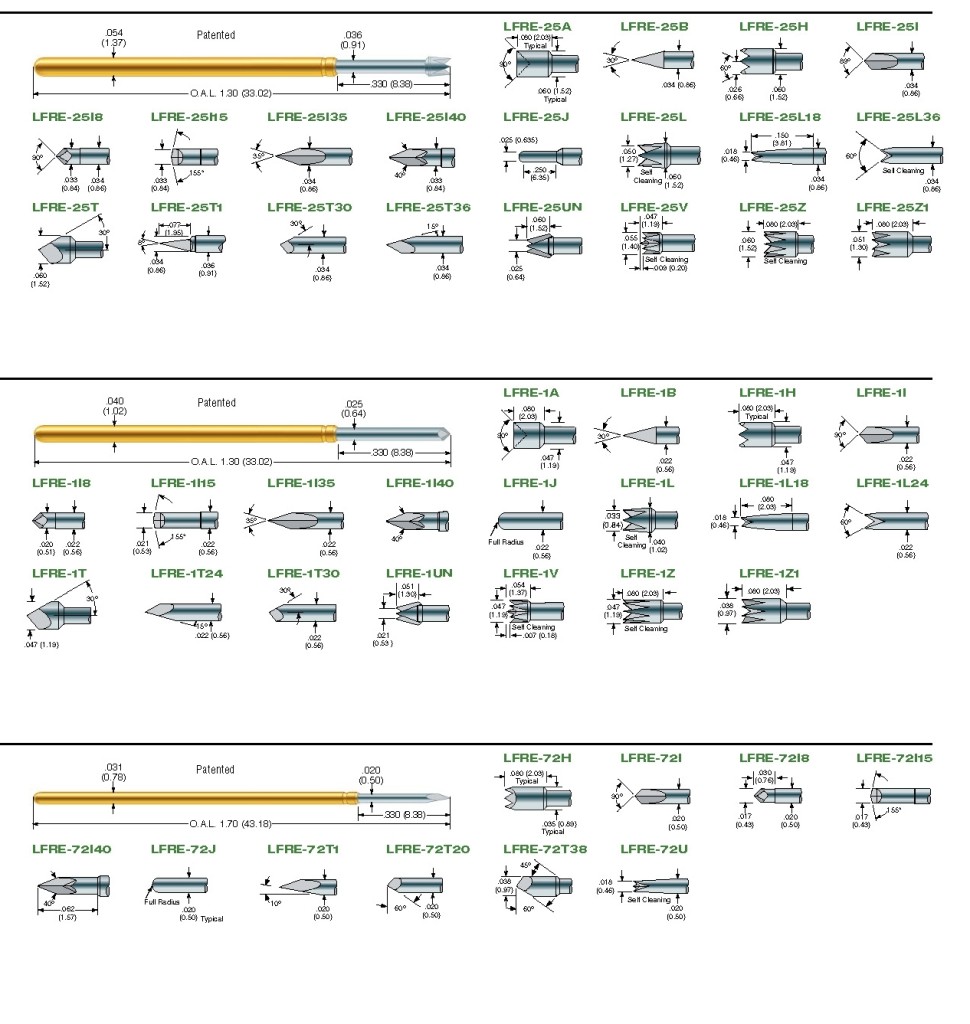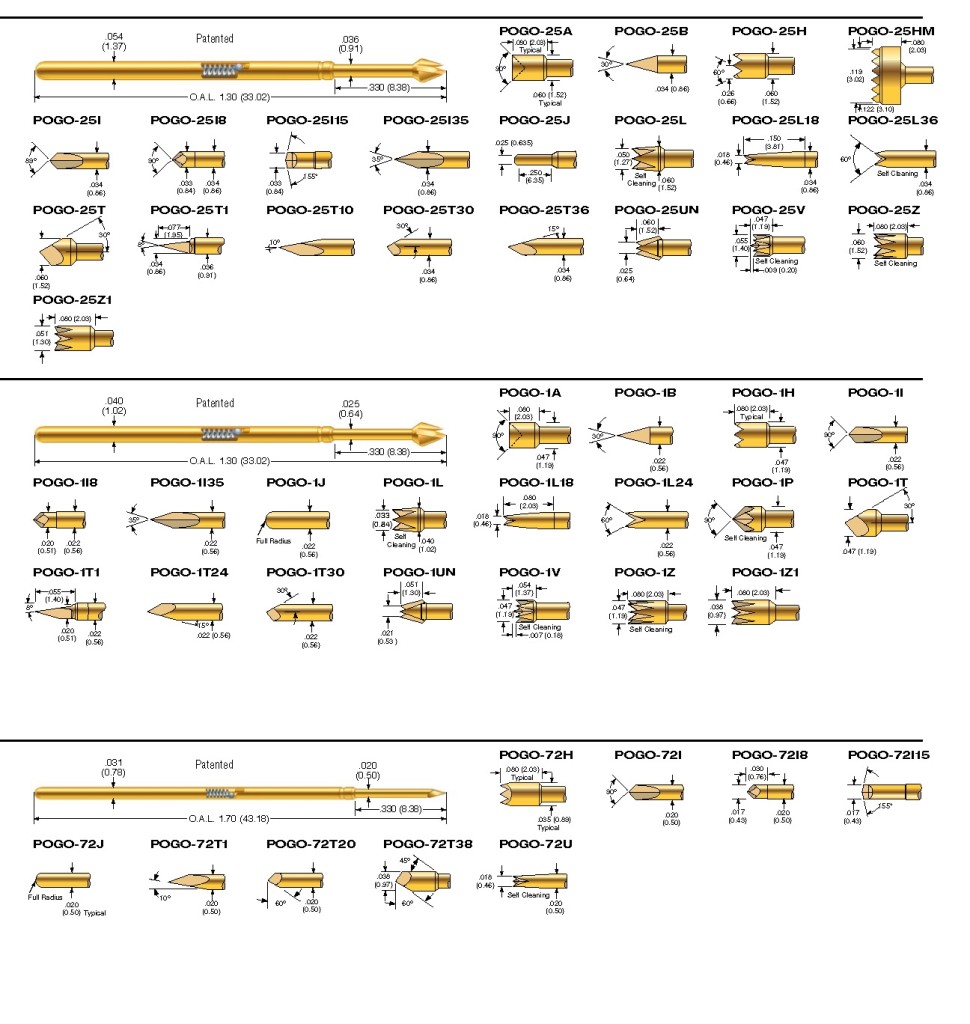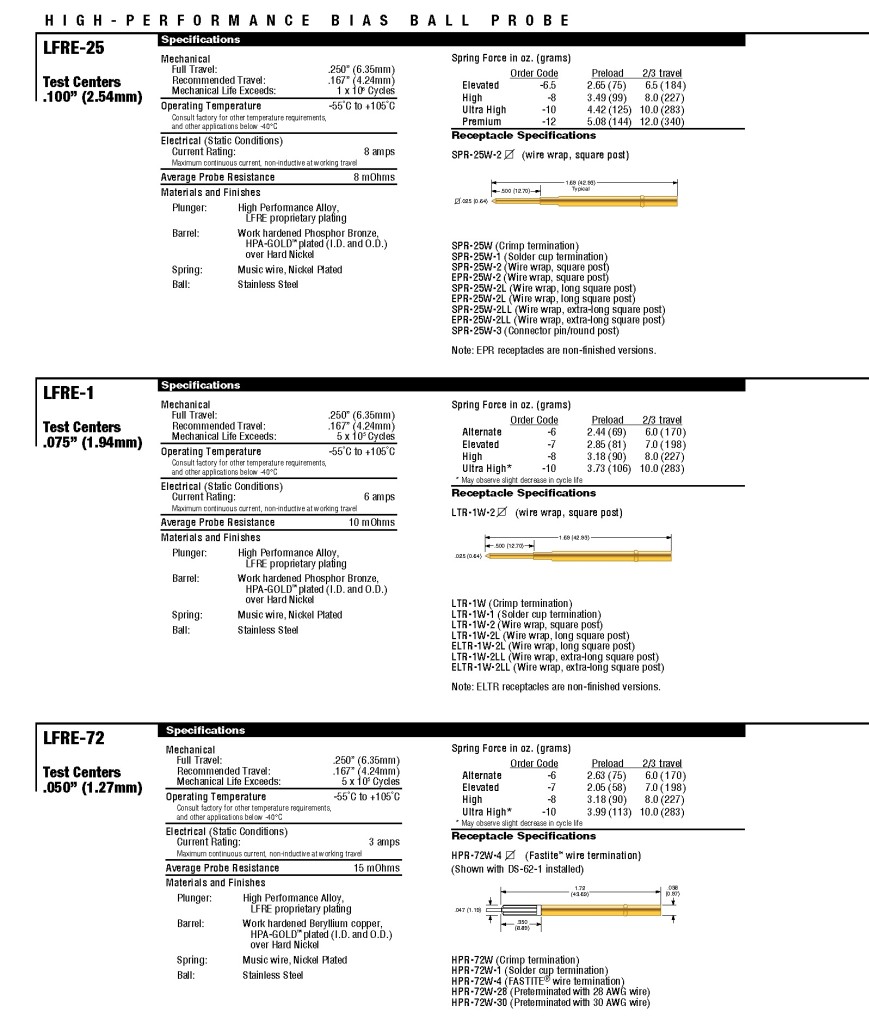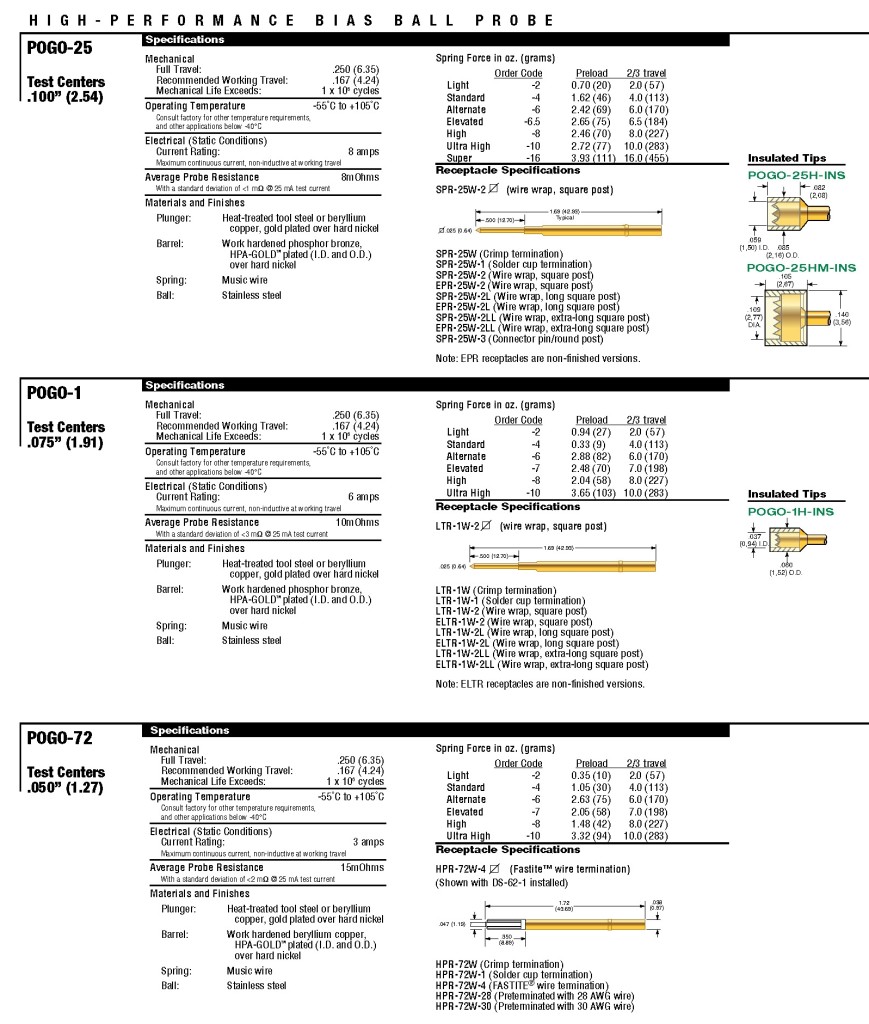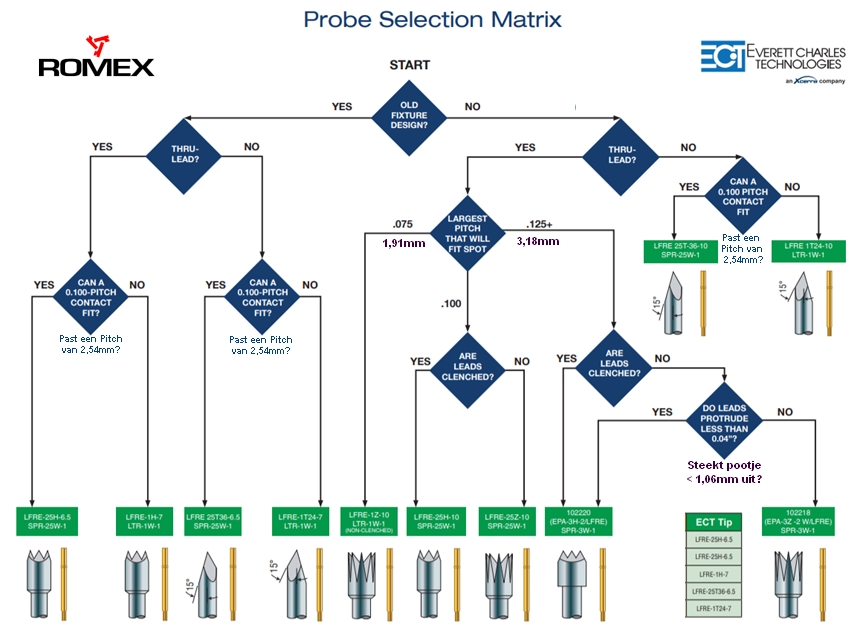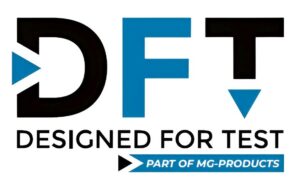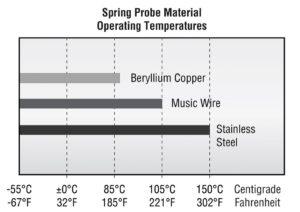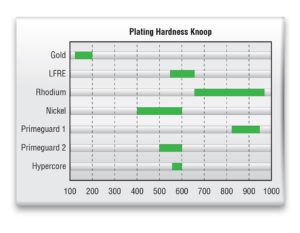Select the correct Tip Style for your Test Probe,

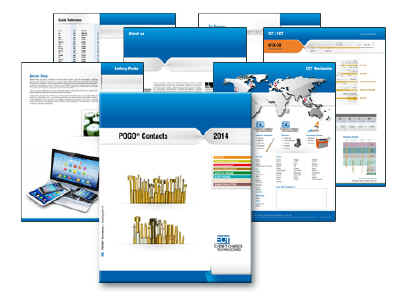
How do I select the optimum POGO® spring probe for my PCB test application?
PCB test fixture designers have many factors to consider when selecting the proper spring probe for their application. In the world of spring probes, choices and trade-offs abound when it comes to selecting tip geometry, spring force, probe base material and plating. Choosing the right combination of options greatly impacts test yields, probe life and cleaning frequency.
Placement of the receptacles.
The receptacles needs to be inserted in the so called probe plate. To do so you find the recommended drill sizes in the catalogue with each probe model.
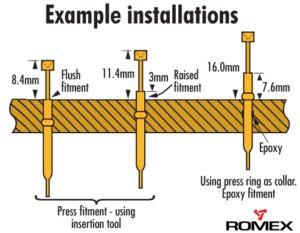
You would typically use a receptacle insertion or RIT tool for this action in that way you can adjust the height of the receptacle and the probe inserted into that receptacles to the required height for test. You will use the tool to press the press ring into the probe plate to reach the required height.
An adjustable RIT (ARIT) is available to set the height of the receptacles exact to the required height. Most common probes specifications are specified at 2/3 compression of the probe under working conditions. Depending on the contact area, flat test point or component leg, you can adjust the height of the receptacles accordingly.
If you need to place the test probe as high as possible, and a so called long travel probe (LTP Probe) will not help you, you can put the press ring on top of the probe plate. Keep in mind that is is needed in that case to fix the receptacle in the hole with epoxy glue. See image for more information.
Probe Tip Selection,
Most tip styles can be used for a variety of different applications. However, some test targets are better suited for unique tip styles. Some applications require a non-aggressive tip to be used on pads, such as radius, crown, or flat. These tips leave little to no witness marks on test pads. More aggressive tip geometries, such as sharp angle blade or pyramid tips, should be considered when coatings or contaminates such as organic solderability preservative (OSP) or solder flux are present on the contact surface. For through-hole vias one should consider large angle (90+ degrees) blade, star, or pyramid tip styles. These are well suited for contact through the outer ring of the via surface. Over time solder builds up oxide layers, therefore medium to very aggressive tips like the serrated, crown, blade, pyramid and point are used. Posts, pins or screws are more unpredictable and therefore more challenging. For these applications, tip styles like the cup, serrated and crown are best suited. Other applications may require more unique tip styles depending on test target material, size, shape, access and cleanliness.
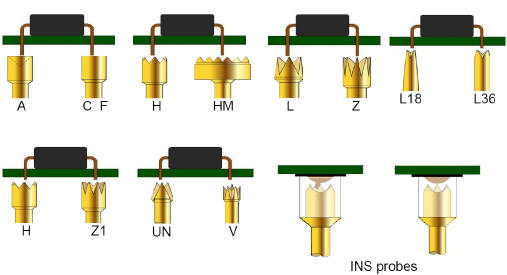
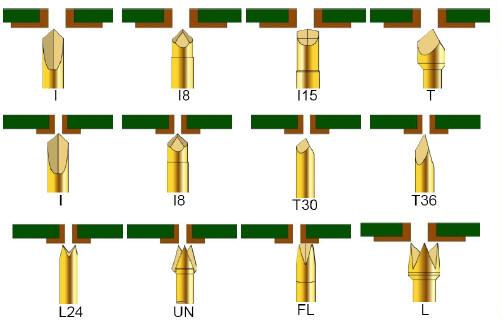
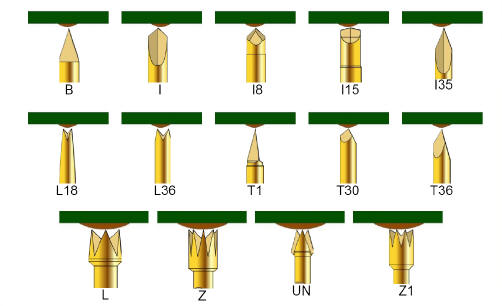
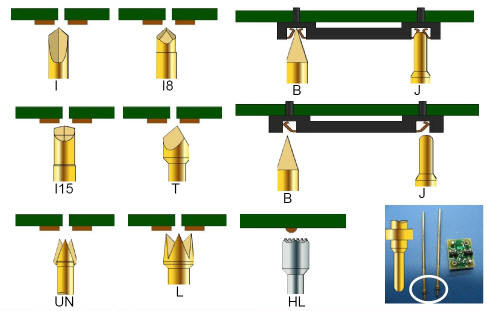
How do I select Base Material / Plating and Spring Force?
In the world of spring probes, choices abound when it comes to selecting materials and platings for plungers, barrels and springs. Choosing the right options can greatly impact yield, probe life and cleaning frequency.
Base Materials
Typical plunger base materials include beryllium copper (BeCu), steel, brass, and tellurium copper. Beryllium copper is a popular choice for plungers because it has both high conductivity and strength compared to other high conductivity alloys. Steel is used when high plunger tip strength is required such as sharp plunger tips and high spring force probes. Brass is similar to BeCu for conductivity, but is a softer material and is mostly used in applications that do not require high strength. Tellurium copper is a much higher conductivity alloy that is used in high current applications.
Typical probe, barrel, and receptacle materials include beryllium copper, phosphor bronze, nickel silver and brass. Barrels and receptacles are most commonly formed by a deep draw process. Beryllium copper, as mentioned before, is both high strength and easily formable. It’s typically used for longer and skinnier forms. Phosphor Bronze when formed has roughly the same qualities as BeCu, however it is more economical. Nickel silver is the most easily formable of the materials, but the trade-off is its lack of strength. Brass is typically used when the barrel is machined instead of deep drawn.
Typical spring materials include music wire, stainless steel, and BeCu. Music wire is the strongest of the 3, but can only withstand an operating temperature of 105C or less. Stainless steel springs are used in higher temperature applications. BeCu springs are used for high conductivity and non-magnetic applications.
Base Materials
- BeCu is used because it is an excellent electrical conductor and is easily machined and hardened.
- Stainless Steel provides a much harder base material and is mainly used on medium to aggressive tips styles to provide longer lifetime.
- Phosphor Bronze is a choice for barrel material due to its excellent wear property.
- Brass is a very good electrical conductor, easy to machine and will accept all plating types.
- Nickel Silver proven as a good electrical conductor and provides excellent dimensional repeatability.
- HyperCore™ is a new base material which provides you with longer life as there is no plating required. Only used on Semiconductor probes.
Plating Choices
Choosing the right plating depends on the application and customer preference. Gold is most frequently used because it provides both excellent electrical performance and good corrosion resistance. Some suppliers offer other plating options to address the challenges of lead free solder. These platings aim to slow the migration of solder from the test point to the tip of the probe and provide longer cleaning cycles. If test points are known to be sensitive to contact resistance, an alternative to gold plating should be considered. Alternative platings also tend to be harder than gold and the tips are much more durable and wear resistive.
Plating
- Gold provides excellent electrical performance for low-resistance applications.
- LFRE proprietary hard plating alloy. Used on lead-free (RoHS) PCB boards and contact points. Approx. 5 times harder than gold plating to extend tip lifetime. Less prone for solder transfer on 100% Tin applications.
- Rhodium is very hard corrosion resistant, and typical preferred when maximum tip life is preferred.
- Nickel relatively hard plating and mainly on probes used for its and very good chemical resistance.
- Primeguard is a very hard plating option only used on Semiconductor probes to extend life and cleaning cycles on 100% tin or palladium based applications.
- HyperCore™ is a new base material which provides you with longer life as there is no plating required. Only used on Semiconductor probes.
Spring Force
Spring force provides the required compliant force at the plunger tip and the contact force between the barrel and the plunger. Spring force selection must be carefully considered when choosing a spring probe. Higher spring forces provide more effective penetration through contamination likely to be present on contact points, but will also leave a heavier witness mark on the test point. The cumulative effect from using high spring force pins may cause flexing of the board under test. This is especially true for in-circuit test applications where there could be thousands of probes used in the fixture. The result of this usually means poor contact on areas most impacted by flexing and perhaps damage to the board. Lower spring forces should be used where no witness marks are welcome or to prevent board flexing on higher pin count applications.
The most common test-probes used in PCB test are the POGO or LFRE -1, -72 and -25 series Below you find their offerings for both the receptacles and head styles.
